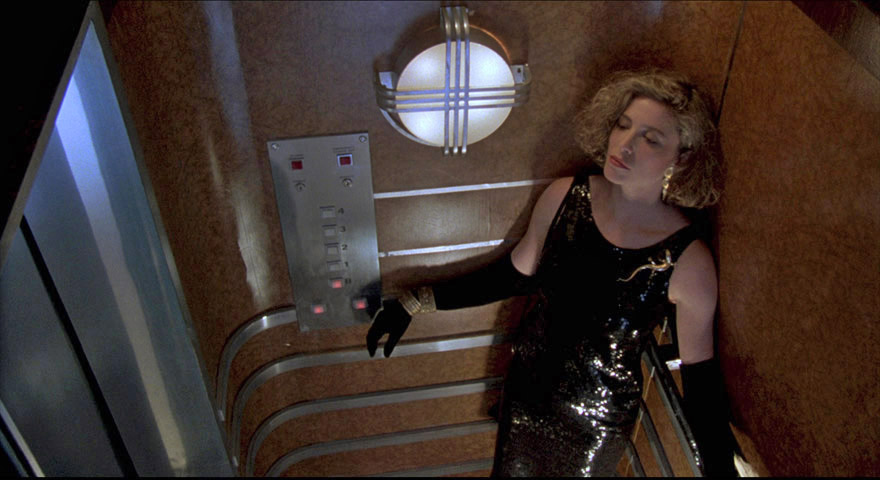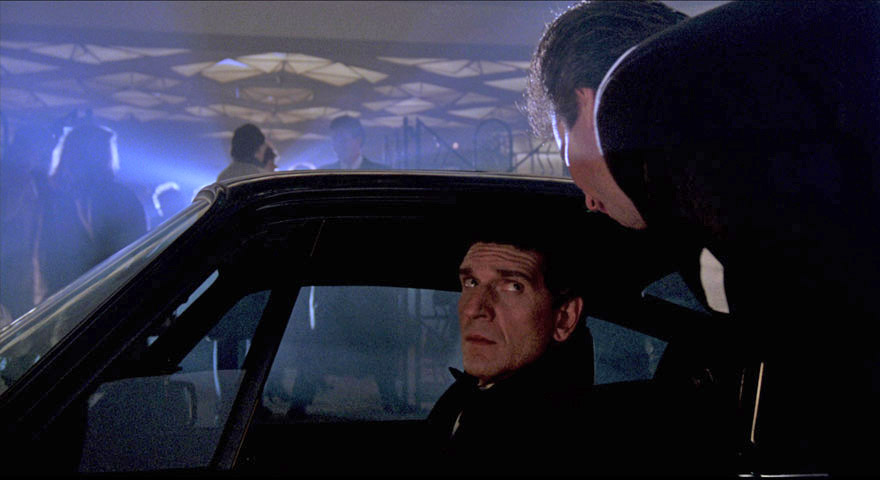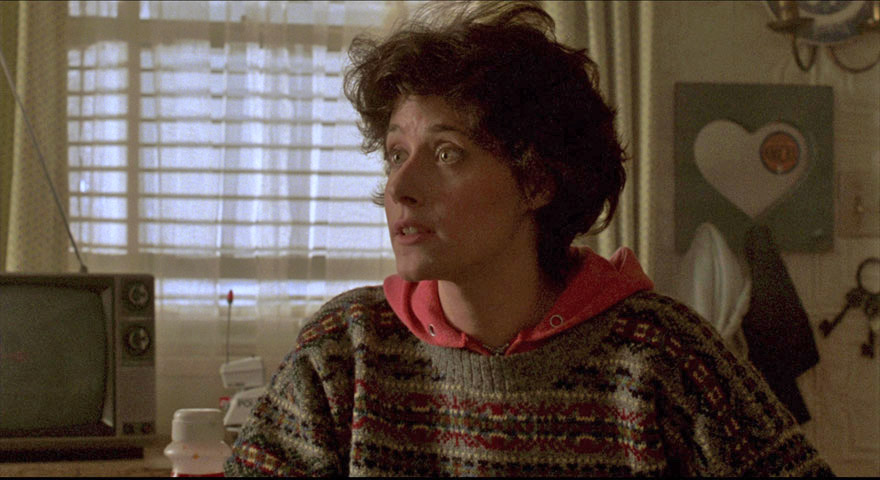| |
“So I started getting defensive, then realised actually I was in fairly good shape in terms of being a film director, because for the kind of movies that I will do, I will be always very visual. And I won't push it in your face, but I know it's an advantage. I've got a good eye, and I don't know what a good eye means, but I've got a good eye, I think.” |
| |
Director Ridley Scott, Wired magazine interview 2007* |
Ridley Scott, defensive?! Sir Ridley is a very talented director with a CV most Hollywood directors would die for. While great success has tapped on his shoulder more than once, you get the impression from his interviews and commentaries that Scott is still (now at the age of 82) aching to prove himself a member of that very exclusive club of ‘film directors who don’t have to explain themselves’. I hope with his name attached to myriad eclectic projects he can ease back a little and be more forgiving of those Hollywood execs who might still question his decisions (why does that even happen anymore?) On the Prometheus commentary you could feel Scott’s virtual blood pressure rising. In 1987, after four visually stunning efforts, some praised, some damned (both judgements prey to cultural conditions of the day), Scott decided to make a ‘normal’ film with its own ‘shooting in New York’ practical challenges. It’s the equivalent of Spielberg taking on Raiders of the Lost Ark wanting to prove that he could shoot a ‘normal’ film on time and on budget after several projects that ballooned during production.
Someone To Watch Over Me is the story of two conflicting social strata in one island melting pot, (I don’t mix metaphors, I liquidise them) in fact probably the most architecturally famous melting pot in the world. Manhattan is displayed as the authentic backdrop to an affecting drama that asks “How does a well-meaning man reconcile a happy marriage with a brief affair entered into to allow the woman he has been assigned to protect to feel even safer?” It’s a tricky one. The relationship/affair was never going to go anywhere and the woman is sympathetic to her new lover’s plight but she still is the beautiful, wealthy wedge between man and wife. While the Twin Towers embeds the film in the pre-9/11 world, the film treads very familiar ground but that’s not so much a criticism as simple recognition. We are in police procedural territory and there’s little that’s surprising but that doesn’t stop the film from being easily diverting. On his promotion to detective in the NYPD, Mike Keegan is seen to be a devoted father and husband living in a run down area in Queens throwing a party for his nearest and dearest. Not that far geographically but half a world away is Claire Gregory, an über-wealthy Manhattan socialite who is chauffeur driven from event to event clad in hugely expensive clothes with a wistful look of royalty and an air of entitlement but not displaying overt vanity or privilege despite swimming in the stuff. She greets an old friend, Winn, at an art gallery, an old friend who is in business with Joey Venza, a shady character who seems to have more than a single screw loose. Enraged at his business associate’s dismissal of him, Joey stabs Winn to death while the murdered man’s friend Claire inadvertently watches horrified from the balcony while on her way to see him. She barely escapes with her life and for his first assignment, Detective Keegan has to step into an alien, palatial world with which he is so unfamiliar and provide protection for his key witness whose testimony can put the bad guy away. That’s about the essence of the plot. Everything else is the quiet simmering of an illicit relationship brought about by the need to be protected and the parallel need to be the protector.

The performances are all very believable and in some cases show off the performers’ range. Tom Berenger, fresh from playing the facially scarred, nastiest bastard in all of Vietnam in Oliver Stone’s Platoon, Sgt. Barnes, now shows us his significantly softer side. Berenger made a career of playing tough guys but as Mike Keegan, his confusion and vulnerability are front and centre. Here is a decent man in a no-win situation. Ah, you say, but he didn’t ‘have’ to have a short affair given his happy marriage. There were many things that led to his decision to cheat on his wife and not all of them easily defensible. But certain men in certain positions can entrap themselves with the best of motives (supporting a vulnerable woman who just happens to be absurdly wealthy and film-star attractive). He could have stayed in the hallway opposite the lift and simply have done his job. He didn’t have to be intimate with Claire. But there’d be no movie without that ensuing complication. And love is no respecter of logic or social boundaries. How many people feel that falling in love is something beyond our control and as my wise French teacher once said “…being genuinely in love with two people is heartbreaking for all.”
Mimi Rogers is perfect casting as Claire, aloof, seemingly unattainable, scared and yet, very human. Rogers has the dubious distinction of introducing once husband Tom Cruise to Scientology. She has since left the organisation. The cat who stole the cream in the cast is Lorraine Bracco as Keegan’s wife Ellie. Her role fizzes with life given great energy by Bracco’s performance. Yes, we feel sympathetic towards her – she is ‘wronged’ after all – but credit to the character. She has an honest husband unable to lie about his physical affair with Claire but desperately wanting his family back. She’s smart enough and forgiving enough to see the many sides of the emotional wreckage brought about by simple happenstance (and a man’s need – positive spin – to keep his charge safe and protected, - negative spin – to have his ego bolstered by a wealthy beauty’s sexual interest in him. The truth of those positive and negative spins is very probably somewhere in between the two. I know that’s a cliché but no one said they weren’t true.
The prototypical Hollywood bad guy from the 80s was an actor named Andreas Katsulas who died in 2006. You can tell he was the bad guy as he is smoking on the poster, a vice that lead to his early death. I’m more familiar with him as the Romulan Tomalak from Star Trek The Next Generation. It must have been both satisfying and galling to be cast as the bad guy time and time again. He has a face that quickly identifies him as someone an audience can boo. He was, of course, the one armed man from the Hollywood remake of the TV series The Fugitive with Harrison Ford. If you have the face, you also need the acting chops. Katsulas was highly convincing as a psychotic bastard but being insane does have its disadvantages when it comes to character motivation but we’ll get to those in a moment.

The use of music is noteworthy in the film. Aside from the top and tail renditions of the title song (by Sting and Roberta Flack respectively), music is used to emphasise the divide between the two worlds of the leads. While Keegan’s home life is largely devoid of score (there is some diegetic music at the opening promotion party), Claire’s world is indicated by rarefied classical cues, mostly famous including the Brothers Scott staple, the duet from the opera Lakmé by Delibes. I found this signposting a little obvious and also a bit grating that music is so identified with a higher class of person, a signifier of culture and refinement. Of course there’s the 80s techno score for the art museum at the start but the film’s traditional score by then giant in the field Michael Kamen, is quite subtle underlining tense and tender passages with a measured orchestral sound that fits the film like a bespoke glove. There’s even the inclusion of the New American Orchestra’s cover of Vangelis’ Memories of Green, more famous as the accompaniment to Blade Runner’s Rick Deckard as he watches the city below his apartment block. Why not use the original?
In one of the film’s action sequences, there’s more than a nod to the famous mirror sequence from Orson Welles’ Lady From Shanghai. It must have been a nightmare to shoot. Editor Claire Simpson’s work is largely invisible (which editorially is how things should be) and the film’s pace, while not leisurely, is certainly kept at a clip enough to keep us interested. Now, about that ending (no spoilers). The answer to the question you will be asking yourself is probably “He’s insane.” That will have to do. There’s spoiler territory in the commentary review below well signposted before you get to it. And for a stylish, subtle romantic thriller, there is the oddest, gross fist-hits-face sound effect that I think I’ve ever heard. Did the mixer twitch and send the sound level up or was this sound effect something Scott wanted? At one hour and nine minutes in, a tearful Lorraine Bracco says “Don’t talk to me about respect,” and throws a punch. The traditional Hollywood punch sound - as far from reality as it always has been - is rendered here almost comical obliterating the word ‘about’. Was there a fluffed line recording that had to be drowned out? It’s very odd.
Despite its initial theatrical failure, Someone has aged extremely well. It’s made with great care and features some lovely performances. It’s nowhere near the top of Scott’s more obvious culturally affecting output but it works as a romance and as a thriller and it’s great news that it’s getting some love from the team at Indicator. Bravo.
It’s Ridley Scott. The picture quality is gorgeous with no blatantly visible dust or negative damage. The film has cleaned up just beautifully. Even in the lighter scenes the actors are lit artfully which is not just another way of saying that you can’t make anything out. Despite its high profile in the film, the lighting doesn’t call attention to itself as much as you may think. The detail contained in the 1.85:1 aspect ratio frame is sometimes so dense, it may take you a few passes to take everything in. Scott and cinematographer Poster had just too much fun in Claire’s apartment created on a sound stage. It’s hard to believe the marble floors are painted paper.

There are no fidelity issues with the stereo sound. All the dialogue is crystal clear and the score and songs are faithfully rendered in the mix. I’m reviewing this disc away from home while working so cannot put the Blu-ray through my normal system but I’m going to assume the soundtrack has not been remastered into a 5.1 surround presentation. There’s no such option on the disc itself. There are new and improved subtitles for the deaf and hard-of-hearing.
Audio commentary with filmmaker and film historian Jim Hemphill (2021)
Hemphill’s commentary is an intelligent and enthusiastic stroll through Ridley Scott’s oeuvre via one of his lesser-known films. He reiterates the movie’s class divide via the opening Scott-filmed helicopter shot that takes us from Manhattan to Queens and makes some telling observations about how Berenger is literally framed indicating his solid, straight character. He also compares Scott with both Spielberg and Scorsese, directors who see the world in a unique way regardless of the genre in which they are working. I’ve always been both impressed and wary of anyone who claims to be able to ‘tell’ from a movie’s mise-en-scene exactly who directed a film. Hemphill covers almost every detail of the film, bios on the actors and great detail on Scott’s creative collaborators and producers. He reminds us that Scott was dented by the failure of Legend that had an even more tumultuous post-production than Blade Runner’s. I remember how condescendingly dismissive the Time Out review was at the time. Say what you like about the film, it can’t be denied it is about as sumptuous a movie you are ever likely to see with a bad guy whose image literally stopped me in my tracks when first seeing it on an Underground poster. On that subject – the canard that Scott makes pretty pictures and nothing more gets a hearty slap down from Hemphill. He says; “I feel very sorry for that person because I know that they are an idiot…” Hemphill acknowledges the failure of the film as a tamer version of the incendiary (at the time) thriller Fatal Attraction coincidentally directed by another alumnus of the UK advertising industry, Adrian Lyne. And finally a personal hurrah… SPOILER ALERT… Hemphill nails the silliness of the climax. What, as both he and I ask, does bad guy Venza hope to get out of holding Keegan’s family hostage? If he gets to kill Claire (the witness to his original murder) he has three other witnesses to deal with. It’s just mad, Ted. This is a terrific, informative and wry commentary. I’d like to hear more from Jim Hemphill.

Someone… to Write a Script (2019): writer Howard Franklin recalls working with director Ridley Scott and the inspirations behind his screenplay (10’ 41”)
“It was my first movie, and sort of like a first love,” sums up Franklin on his experience of writing Someone. He covers how differently writer and director imagined the tone and design of the film, names the opening credits as his favourite part of the film (!) and he also identifies the pianist in a fancy bar whose appearance is so fleeting to be almost negligible. But there’s nothing negligible about Nina Simone. How she (a) became cast and (b) agreed to such a small role is beyond me. She is somewhat passed over in a leisurely pan to the principals having a drink. When you are primed you can spot her. Franklin also reveals a rather odd inspiration for his fish out of water thriller. Somewhat infamous at the time being seen as anti-gay, Cruising (directed by William Friedkin and starring Al Pacino) featured a cop having to find a murderer in the unfamiliar (to him) milieu of gay S&M leather bars. Franklin simply transposed the idea, to Manhattan’s wealthy high society.
Someone… to Shoot a Movie (2019): director of photography Steven Poster discusses creating the distinctive look of the film (14’ 04”)
This is a fascinating interview with a man clearly blessed with talent and the ability to recognise a golden opportunity when it falls in your lap. I would imagine - given Ridley Scott’s expertise as a lighting cameraperson - that most cinematographers would be intimidated working with him but the collaboration between Scott and Poster seems to have been mutually beneficial. Having been in the film and TV business myself for almost 40 years, lighting is the one craft I know least about and so gems like this extra help dispel my pure ignorance of the subject. Poster talks about smoke, reflections and mirrors, all tools in the creative arsenal. This is a very informative extra feature that taught me a lot.
Original theatrical trailer (1’ 49”)
The movie in microcosm, the trailer sets up the difference in worlds by intercutting a working class woman with her husband concerned about her bottom and a pair of high-heels and stocking-clad legs walking away from us. There’s no voice over or caption cards and the narrative is told from excerpts of film dialogue. That said, it is a good example of an effective trailer where you get a sense of exactly what the film is promising to deliver.
Image gallery: promotional and publicity materials
This features a reasonably modest 11 colour stills and 5 posters with of course, the Polish version leaping out at you like a demented hedgehog.

Limited edition exclusive 32-page booklet with a new essay by Jamie Graham, archival interviews with director of photography Steven Poster and actor Mimi Rogers, an overview of contemporary critical responses, and film credits
This is a solid entry in the booklet league and it reminded me very much of the film it was supporting. It’s nothing phenomenal and not at all underwhelming. Like Mama Bear’s porridge for Goldilocks, the booklet is ‘just right’ for an undemanding but stylish film, ‘just right’ for a quiet evening’s solid entertainment. Jamie Graham’s piece on the film A Future Perspective places the release of the film in context and finds a lot to admire in this neglected work. Journalist Ron Magid talks to cinematographer Steven Poster for American Cinematographer magazine while on location for the filming. This article overlaps and compliments the interview with Poster. It’s worth reading if you have any interest in Ridley Scott’s working practises or if you want some lighting tips from a top cinematographer. An Interview with Mimi Rogers is taken from a promotional tour she made for the film. She earmarks what makes Claire sympathetic and states that among the three leads, it’s very difficult to paint anyone in black and white terms as each character is rounded and believable. Critical Response reprints extracts of reviews from the time; Julian Petley’s from the Monthly Film Bulletin, Roger Ebert’s rather scathing piece and the Associated Press’ Bob Thomas (a positive review which may have been difficult to source) from the Mansfield News Journal. It’s not The Washington Post but hey, you take praise where you find it.
I have fond memories of seeing Someone To Watch Over Me at the cinema during its original run and couldn’t quite understand why the press was so hostile towards it. Yes, it’s not Citizen Kane but as undemanding entertainment it has many virtues, not least the cinematography and earnest and authentic performances. For reasons probably not unconnected to writing this review, I re-watched both The Big Chill and Platoon a few days ago and can clearly appreciate that Berenger is a class act. How can you will Charlie Sheen to shoot this guy in one film and then be heartbroken for him in another? That’s great acting. While this may be Ridley Scott-light, it’s still in a class of its own. Well recommended.
|